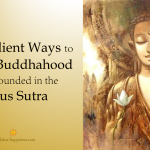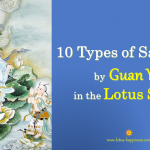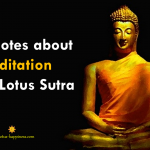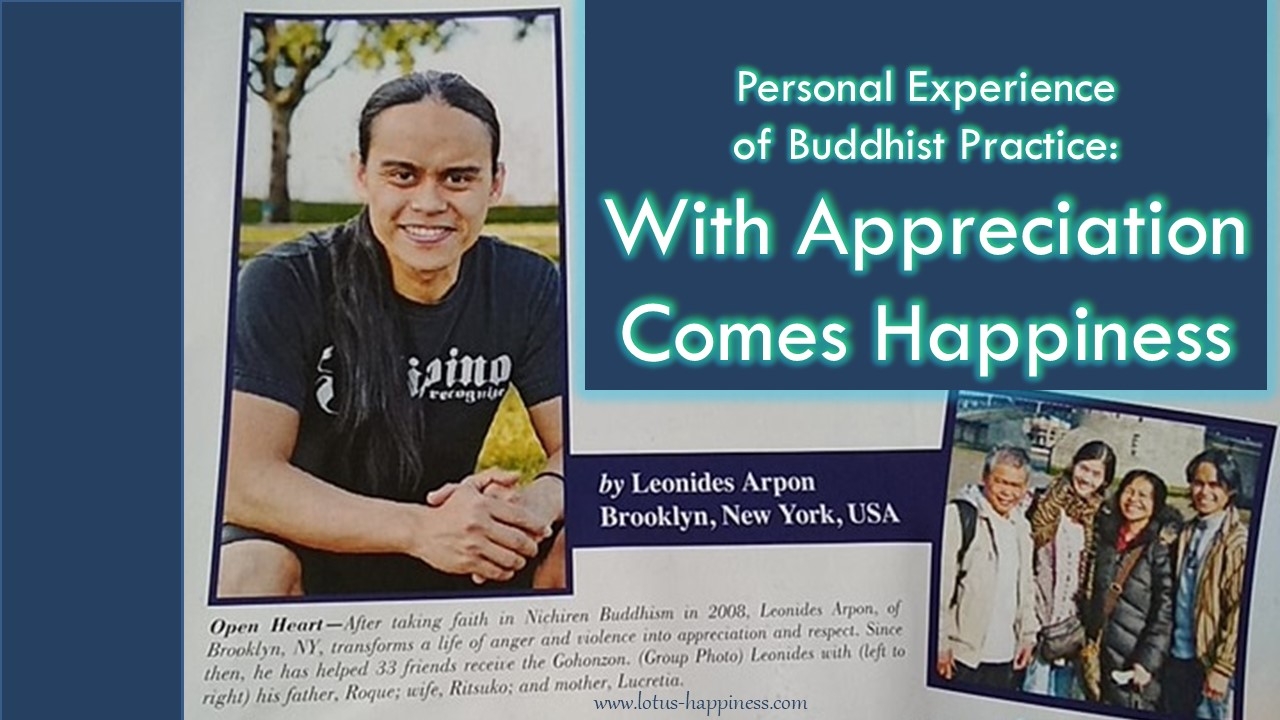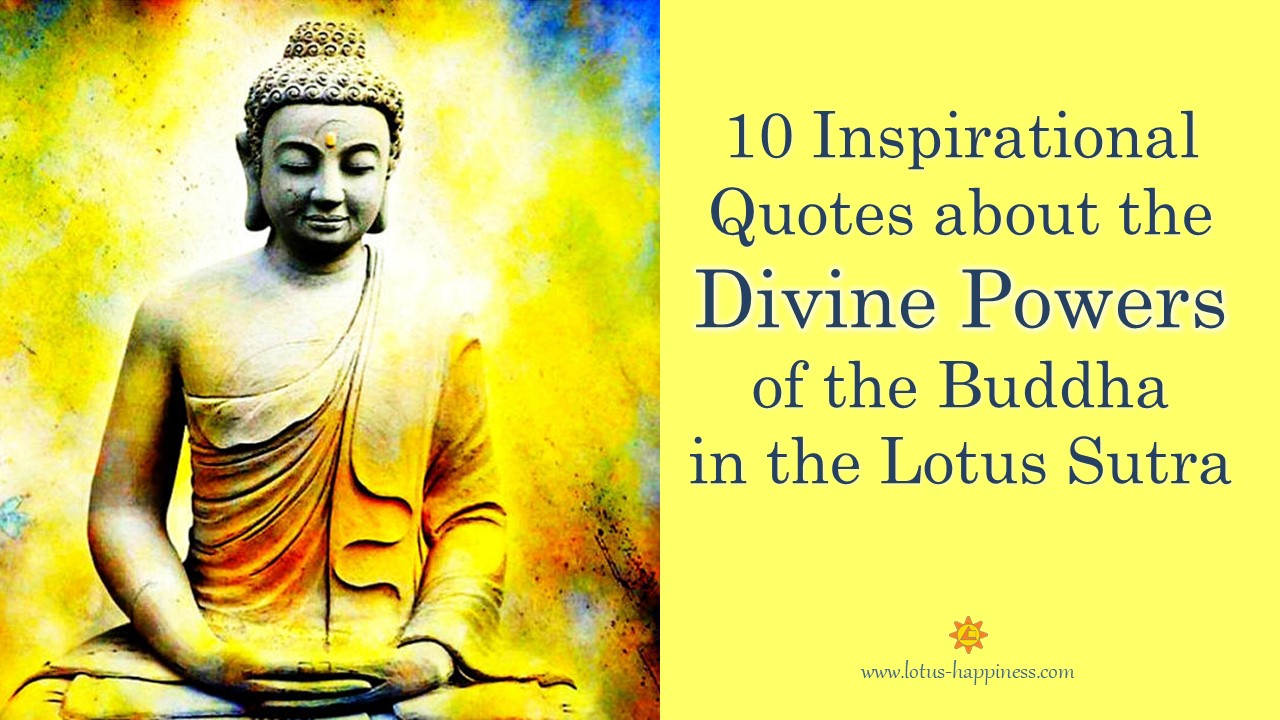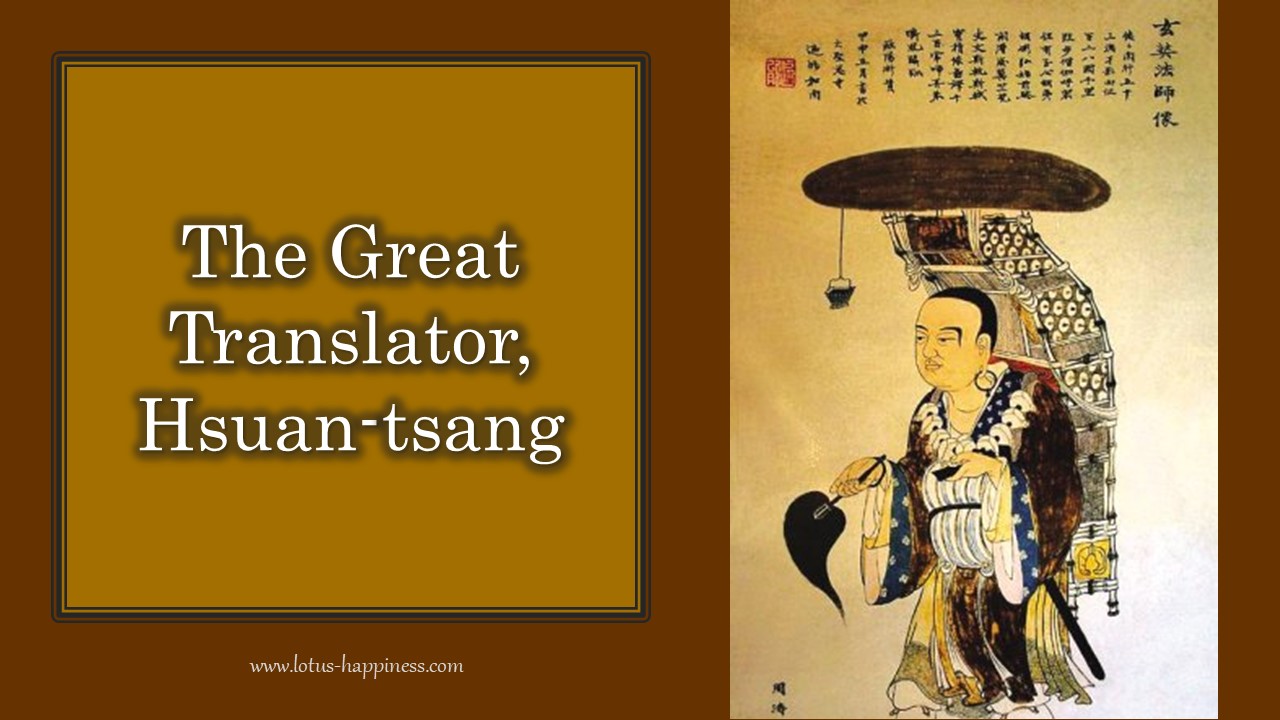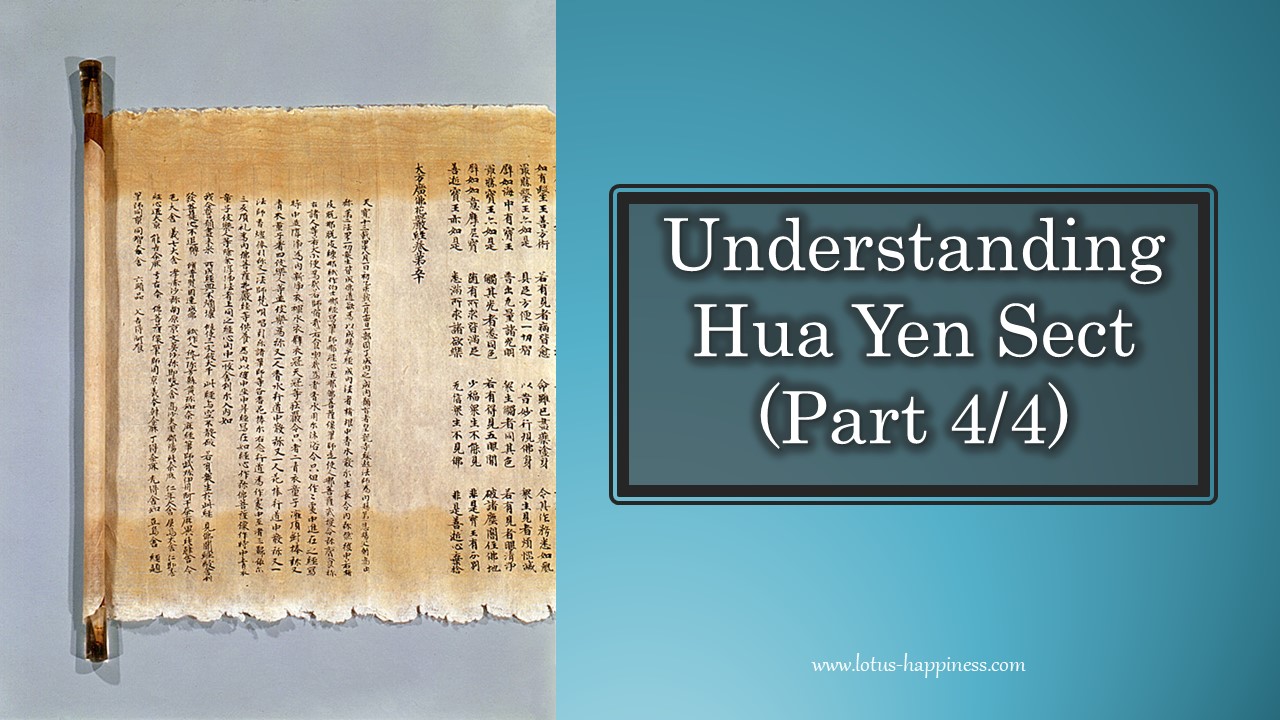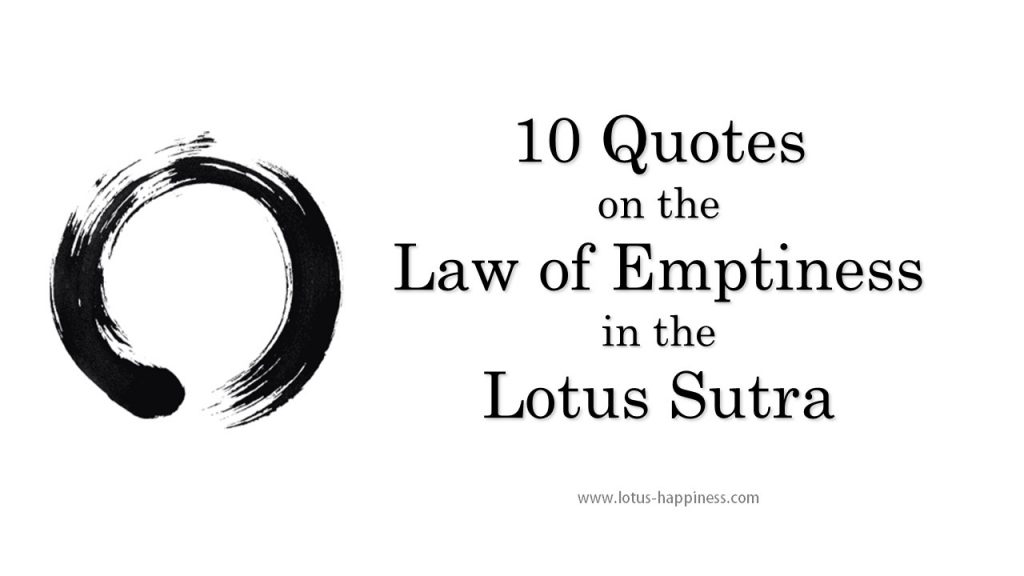
10 Quotes on the Law of Emptiness in the Lotus Sutra
The Law of Emptiness is one of the most pivotal concepts in Mahayana or Vajrayana tradition of Buddhism. The teaching of emptiness is expounded in many sutras such as the Lotus Sutra, Heart Sutra, Diamond Sutra, Immeasurable Meanings Sutra, the Sutra of Meditation on Bodhisattva Universal Worthy, and the list goes on.
The Buddha teaches that the true nature of the Law of Supreme Perfect Enlightenment is that of emptiness. What is the Law of Emptiness?
According to Nagarjuna, the founder of Madhyamaka school of Mahayana Buddhism, emptiness means “the Middle Way”. It is a state of neither existence nor non-existence, yet exhibits the qualities of both.
The Law of Emptiness is the direct opposite of Dependent Origination. While Dependent Origination teaches that all phenomena exist in relation to another changing phenomena, and that it is devoid of self-nature, the Law of Emptiness is independent of the “bonds” of all phenomena, thus making it possible for phenomena to express their true nature or true self especially qualities such as eternity, indestructibility, purity, and happiness. Does it ring a bell? The Four Virtues of the Buddha are True Self, Eternity, Purity, and Happiness.
For instance, the eternal lifespan of Tathagata is an expression of the Law of Emptiness, as does the adamantine Dharma body of the Buddha. The same goes to the immeasurable divine manifestations of Bodhisattva Avalokitesvara in response to the salvation needs of each individual.
In the Sutra of Meditation on Bodhisattva Universal Worthy, which is the closing sutra of the Lotus Sutra, the Buddha teaches methods of meditation upon emptiness to eradicate all karmic offenses accumulated in the immeasurable past.
The ultimate truth of life is that of birthless and deathless, which means “eternity”. Discrimination between the dichotomies of “good or bad”, “birth and death”, and “right or wrong” results in the misunderstanding of the true nature of life.
In essence, the Buddha reveals in the threefold Lotus Sutra that the characteristics of the phenomena are the Ten Factors but their true nature is that of “emptiness” or “non-substantiality”.
In other words, the Law of Buddhahood contains within which the Law of Emptiness and the truth of the Middle Way. When Nichiren Buddhists (regardless of whether they belong to SGI, Nichiren Shoshu, or Nichiren Shu etc) chant the daimoku of “Nam Myoho Renge Kyo“, they are inadvertently expressing this splendidly wonderful truth in their practice.
Here are the 10 Quotes on the Law of Emptiness in the Lotus Sutra:
Quote #1
In the Beginning, there is Emptiness.
“However, Tathagata understands the Law of one form and one flavor—namely the form of deliverance, the form of dissociation, and the form of dissolution—as well as the ultimate nirvana of eternal tranquility that will eventually return to its original emptiness. The Buddha fully comprehends these but he does not immediately expound the perfect wisdom to all living beings because he wishes to protect them after having perceived the desires in their minds. (Lotus Sutra 5: 1.11)
Quote #2
Great Bodhisattva Practice the Law of Emptiness
“Again, if there are those who practice meditation
and attain divine powers,
having heard the Law of Emptiness,
they experience exuberant joy in their hearts
and emit innumerable rays of lights
so as to save numerous living beings,
they are the Large Tree
that will grow and develop in their own ways. (Lotus Sutra 5: 2.38)
Quote #3
Meditate upon the Law of Emptiness to be liberated from the Threefold World.
“Throughout the long night,
we practiced the Law of Emptiness,
so as to be liberated from the Threefold World
and the bitter pains of trials and tribulations.
Dwelling in the final existence,
we expected to attain the partial nirvana. (Lotus Sutra 4: 2.45)
Quote #4
The Law of Emptiness is Part and Parcel of the Buddhist Practice
“O monks! If Tathagata knows of his impending parinirvana and knows that the people in the assembly are pure, firm in faith and understanding, have perceived the Law of Emptiness, and are able to enter deep meditation, then he will gather the assembly of bodhisattvas and shravakas to expound the Lotus Sutra for them. In this Universe, there are no two Vehicles to attain parinirvana; for true extinction can only be achieved via the one and only Buddha-Vehicle. (Lotus Sutra 7: 4.17)
Quote #5
Purna, the Foremost in Preaching, Has a Perfect Understanding of the Law of Emptiness
“Furthermore, he had a perfect understanding of the Law of Emptiness expounded by the Buddhas. Having acquired the Four Unhindered Wisdoms, he was able to expound with clarity. Free of doubt and confusion, he had fully developed the divine powers of bodhisattvas. Lifetime after lifetime, he consistently carried out pure Brahma practices. Therefore, he was recognized as a true shravaka for all people living in the era of that particular Buddha. (Lotus Sutra 8: 1.5)
Quote #6
Emptiness is the Fundamental Nature of All Phenomena
“The sanctuary represents
a mind of great mercy and compassion;
the robe represents
a heart of gentleness and patience;
the throne represents
the awareness of emptiness in all phenomena.
These are the three principles to apply
when the Lotus Sutra is expounded. (Lotus Sutra 10: 2.19)
Quote #7
One of the Mahayana Teachings is The Law of Emptiness
Even before he had finished his reply, innumerable bodhisattvas seated on the jeweled lotus flowers emerged from the oceans and arrived at Eagle Peak, where they remained elevated in the air. These bodhisattvas had all been taught, transformed, and saved by Manjushri. Those who had mastered bodhisattva practice were having a discussion on the Six Paramitas. Those shravakas who previously carried out the shravaka’s practices in midair were now practicing the Mahayana’s Principle of Emptiness. Manjushri said to Accumulated Wisdom: “These are the people in the oceans who were taught by me.” (Lotus Sutra 12: 3.5)
Quote #8
The Intrinsic Nature of Life is that of Emptiness
“Next, bodhisattvas-mahasattvas should view all phenomena as being intrinsically empty in order to correctly perceive their true nature, which has no topsy-turvy, no movement, no regression, and no evolvement. It is like an empty nothingness without intrinsic nature and beyond the expression of word. There is no birth, no emerging, no arising, no name, no form, no substantial existence, no quantity, no boundary, no hindrance, and no obstruction. All phenomena arise by reason of causation; and they are commonly explained in an inverted manner by reason of creation. (Lotus Sutra 14:1.8)
Quote #9
Emptiness is the Middle Way State of Non-Duality
“Why is this so? Because Tathagata completely perceives the true characteristics of the Threefold World as they are: there is no birth or death, no ebbing or arising. Neither is there present existence and subsequent extinction, substantial reality or fictitious imagination, same or different. These characteristics of realities are not what one perceives them to be while living in the Threefold World. Tathagata has clearly and unmistakably seen all these. (Lotus Sutra 16: 1.11)
Quote #10
Emptiness means Non-Judgment, as evidenced by the Fair and Equal Salvation of Bodhisattva Avalokitesvara
“Again, if someone—irrespective of whether his is guilty or not—being shackled by manacles, fetters, cangues, or chains should call upon the name Bodhisattva Avalokitesvara, then his shackles will be destroyed, setting him free. (Lotus Sutra 25: 1.7)
Don’t forget to share the joy of Lotus with your friends and family!
Grab a copy for self-study:
Paperback: Lotus Sutra is available in the Amazon.
PDF Ebook: The Lotus Sutra and Its Opening and Closing Sutras.


